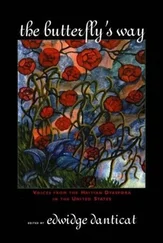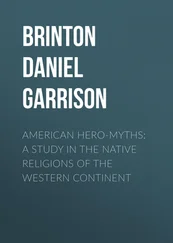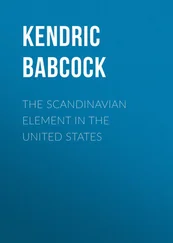Hubert Bancroft - The Native Races [of the Pacific states], Volume 1, Wild Tribes
Здесь есть возможность читать онлайн «Hubert Bancroft - The Native Races [of the Pacific states], Volume 1, Wild Tribes» — ознакомительный отрывок электронной книги совершенно бесплатно, а после прочтения отрывка купить полную версию. В некоторых случаях можно слушать аудио, скачать через торрент в формате fb2 и присутствует краткое содержание. ISBN: , Жанр: foreign_antique, foreign_prose, на английском языке. Описание произведения, (предисловие) а так же отзывы посетителей доступны на портале библиотеки ЛибКат.
- Название:The Native Races [of the Pacific states], Volume 1, Wild Tribes
- Автор:
- Жанр:
- Год:неизвестен
- ISBN:http://www.gutenberg.org/ebooks/41070
- Рейтинг книги:5 / 5. Голосов: 1
-
Избранное:Добавить в избранное
- Отзывы:
-
Ваша оценка:
- 100
- 1
- 2
- 3
- 4
- 5
The Native Races [of the Pacific states], Volume 1, Wild Tribes: краткое содержание, описание и аннотация
Предлагаем к чтению аннотацию, описание, краткое содержание или предисловие (зависит от того, что написал сам автор книги «The Native Races [of the Pacific states], Volume 1, Wild Tribes»). Если вы не нашли необходимую информацию о книге — напишите в комментариях, мы постараемся отыскать её.
The Native Races [of the Pacific states], Volume 1, Wild Tribes — читать онлайн ознакомительный отрывок
Ниже представлен текст книги, разбитый по страницам. Система сохранения места последней прочитанной страницы, позволяет с удобством читать онлайн бесплатно книгу «The Native Races [of the Pacific states], Volume 1, Wild Tribes», без необходимости каждый раз заново искать на чём Вы остановились. Поставьте закладку, и сможете в любой момент перейти на страницу, на которой закончили чтение.
Интервал:
Закладка:
391
The Shushwaps formerly crossed the mountains to the Assinniboine territory. The Okanagans when hunting wear wolf or bear skin caps; there is no bird or beast whose voice they cannot imitate. War and hunting were the Nez Percé occupation; cross the mountains for buffalo. Ross' Fur Hunters , vol. i., pp. 148, 219, 297-8, 305. The chief game of the Nez Percés is the deer, 'and whenever the ground will permit, the favourite hunt is on horseback.' Lewis and Clarke's Trav. , p. 555. The Salish live by the chase, on elk, moose, deer, big-horn and bears; make two trips annually, spring to fall, and fall to mid-winter, across the mountains, accompanied by other nations. The Pend d'Oreilles hunt deer in the snow with clubs; have distinct localities for hunting each kind of game. Nez Percés, Flatheads, Coeurs d'Alêne, Spokanes, Pend d'Oreilles, etc., hunt together. Yakimas formerly joined the Flatheads in eastern hunt. Ind. Aff. Rept. , 1854, pp. 207-8, 212-15, 218, 225-6. 'Two hunts annually across the mountains – one in April, for the bulls, from which they return in June and July; and another, after about a month's recruit, to kill cows, which have by that time become fat.' Stevens, Gibbs, and Suckley , in Pac. R. R. Rept. , vol. i., pp. 415, 408, 296-7, vol. xii., p. 134. Kootenais live by the chase principally. Hutchins , in Ind. Aff. Rept. , 1863, p. 455. Spokanes rather indolent in hunting; hunting deer by fire. Cox's Adven. , vol. i., pp. 197, vol. ii., pp. 46-7. The Kootenais 'seldom hunt;' there is not much to shoot except wild fowl in fall. Trap beaver and carriboeuf on a tributary of the Kootanie River. Palliser's Explor. , pp. 10, 15, 73. Flatheads 'follow the buffalo upon the headwaters of Clarke and Salmon rivers.' Nez Percé women accompany the men to the buffalo-hunt. Parker's Explor. Tour , pp. 107, 311. Kootenais cross the mountains for buffalo. Mayne's B. C. , p. 297. Coeurs d'Alêne ditto. Mullan's Rept. , p. 49. Half of the Nez Percés 'usually make a trip to the buffalo country for three months.' Wilkes' Nar. , in U. S. Ex. Ex. , vol. iv., p. 494. Shushwaps 'live by hunting the bighorns, mountain goats, and marmots.' Milton and Cheadle's N. W. Pass. , p. 242. Buffalo never pass to west of the Rocky Mountains. Lord's Nat. , vol. ii., p. 179; Kane's Wand. , p. 328; De Smet , Voy. , pp. 31, 45, 144-5; Ind. Life , pp. 23-4, 34-41; Franchère's Nar. , pp. 268-9; Hunt , in Nouvelles Annales des Voy. , tom. x., 1821, pp. 77-82; Stuart , in Id. , tom. xii., pp. 25, 35-6; Joset , in Id. , tom. cxxiii., 1849, pp. 334-40.
392
The Kliketats gather and eat peahay , a bitter root boiled into a jelly; n'poolthla , ground into flour; mamum and seekywa , made into bitter white cakes; kamass ; calz , a kind of wild sunflower. Tolmie , in Lord's Nat. , vol. ii., p. 247. The Flatheads go every spring to Camass Prairie. De Smet , Voy. , p. 183. The Kootenais eat kamash and an edible moss. Id. , Missions de l'Orégon , pp. 75-6. 'The Cayooses, Nez Percés, and other warlike tribes assemble (in Yakima Valley) every spring to lay in a stock of the favourite kamass and pelua, or sweet potatoes.' Ross' Fur Hunters , vol. i., p. 19. Quamash, round, onion-shaped, and sweet, eaten by the Nez Percés. Lewis and Clarke's Trav. , p. 330. Couse root dug in April or May; camas in June and July. Alvord , in Schoolcraft's Arch. , vol. v., p. 656. The Skyuses 'main subsistence is however upon roots.' The Nez Percés eat kamash , cowish or biscuit root, jackap , aisish , quako , etc. Irving's Bonneville's Adven. , p. 301, 388. Okanagans live extensively on moss made into bread. The Nez Percés also eat moss. Wilkes' Nar. , in U. S. Ex. Ex. , vol. iv., pp. 462, 494. Pend d'Oreilles at the last extremity live on pine-tree moss; also collect camash, bitter-roots, and sugar pears. Stevens , in Ind. Aff. Rept. , 1854, p. 211, 214-15. 'I never saw any berry in the course of my travels which the Indians scruple to eat, nor have I seen any ill effect from their doing so.' Kane's Wand. , p. 327. The Kootenai food in September 'appears to be almost entirely berries; namely, the "sasketoom" of the Crees, a delicious fruit, and a small species of cherry, also a sweet root which they obtain to the southward.' Blakiston , in Palliser's Explor. , p. 73. Flatheads dig konah , 'bitter root' in May. It is very nutritious and very bitter. Pahseego , camas, or 'water seego,' is a sweet, gummy, bulbous root. Stuart's Montana , pp. 57-8. Colvilles cut down pines for their moss (alectoria?). Kamas also eaten. Pickering's Races , in U. S. Ex. Ex. , vol. ix., p. 34. The Shushwaps eat moss and lichens, chiefly the black lichen, or whyelkine . Mayne's B. C. , p. 301; Parker's Explor. Tour , p. 127. The Salish in March and April eat popkah , an onion-like bulb; in May, spatlam , a root like vermicelli; in June and July, itwha , like roasted chestnuts; in August, wild fruits; in September, marani , a grain. Domenech's Deserts , vol. ii., p. 312.
393
At the Dalles 'during the fishing season, the Indians live entirely on the heads, hearts and offal of the salmon, which they string on sticks, and roast over a small fire.' Besides pine-moss, the Okanagans use the seed of the balsam oriza pounded into meal, called mielito . 'To this is added the siffleurs .' Berries made into cakes by the Nez Percés. Wilkes' Nar. , in U. S. Ex. Ex. , vol. iv., pp. 410, 462, 494. Quamash, 'eaten either in its natural state, or boiled into a kind of soup, or made into a cake, which is then called pasheco.' Lewis and Clarke's Trav. , pp. 330, 353, 365, 369. Women's head-dress serves the Flatheads for cooking, etc. De Smet , Voy. , pp. 47, 193-9; Id. , Missions de l'Orégon , pp. 75-6. 'The dog's tongue is the only dish-cloth known' to the Okanagans. Pine-moss cooked, or squill-ape , will keep for years. 'At their meals they generally eat separately and in succession – man, woman and child.' Ross' Adven. , pp. 132-3, 295, 317-18. 'Most of their food is roasted, and they excel in roasting fish.' Parker's Explor. Tour , pp. 231, 107. 'Pine moss, which they boil till it is reduced to a sort of glue or black paste, of a sufficient consistence to take the form of biscuit.' Franchère's Nar. , p. 279. Couse tastes like parsnips, is dried and pulverized, and sometimes boiled with meat. Alvord , in Schoolcraft's Arch. , vol. v., p. 656. Root bread on the Clearwater tastes like that made of pumpkins. Gass' Jour. , pp. 202-3. Kamas after coming from the kiln is 'made into large cakes, by being mashed, and pressed together, and slightly baked in the sun.' White-root, pulverized with stones, moistened and sun-baked, tastes not unlike stale biscuits. Townsend's Nar. , pp. 126-7. Camas and sun-flower seed mixed with salmon-heads caused in the eater great distension of the stomach. Remy and Brenchley's Jour. , vol. ii., pp. 509-11. Sowete , is the name of the mixture last named, among the Cayuses. Coke's Rocky Mts. , p. 310; Ind. Life , p. 41; Stuart's Montana , pp. 57-8; Pickering's Races , in U. S. Ex. Ex. , vol. ix., p. 34; Kane's Wand. , pp. 272-3; Ind. Aff. Rept. , 1854, pp. 214-15.
Читать дальшеИнтервал:
Закладка:
Похожие книги на «The Native Races [of the Pacific states], Volume 1, Wild Tribes»
Представляем Вашему вниманию похожие книги на «The Native Races [of the Pacific states], Volume 1, Wild Tribes» списком для выбора. Мы отобрали схожую по названию и смыслу литературу в надежде предоставить читателям больше вариантов отыскать новые, интересные, ещё непрочитанные произведения.
Обсуждение, отзывы о книге «The Native Races [of the Pacific states], Volume 1, Wild Tribes» и просто собственные мнения читателей. Оставьте ваши комментарии, напишите, что Вы думаете о произведении, его смысле или главных героях. Укажите что конкретно понравилось, а что нет, и почему Вы так считаете.
![Hubert Bancroft The Native Races [of the Pacific states], Volume 1, Wild Tribes обложка книги](/books/750126/hubert-bancroft-the-native-races-of-the-pacific-s-cover.webp)








![Hubert Bancroft - The Native Races [of the Pacific states], Volume 5, Primitive History](/books/749157/hubert-bancroft-the-native-races-of-the-pacific-s-thumb.webp)


